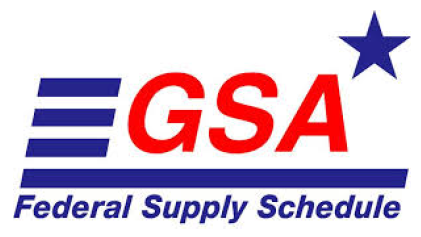Federal contract opportunities through set-asides and socioeconomic programs are vital for small and diverse businesses. These programs allocate contracts to businesses meeting specific criteria, such as being small, women-owned, veteran-owned, or part of other designated groups. This blog provides an updated and comprehensive guide to understanding and leveraging these programs for maximum benefit.
Introduction
Federal contract opportunities are designed to foster economic growth among underrepresented groups by ensuring these businesses can compete for and win government contracts. This guide aims to provide updated information on how to navigate and benefit from these programs.
Understanding Set-Asides and Socioeconomic Programs
What are Set-Asides?
Set-aside programs reserve certain federal contracts exclusively for qualifying businesses, aiming to diversify the vendor pool and promote business growth among disadvantaged groups.
Key Socioeconomic Categories
- Small Business Set-Asides: These contracts are reserved for businesses that meet the Small Business Administration (SBA) size standards. The goal is to ensure that small businesses have a fair chance to compete for federal contracts.
- Women-Owned Small Business (WOSB): This program is designed to help women entrepreneurs gain access to federal contracts. Businesses must be at least 51% owned and controlled by one or more women, and the women must be U.S. citizens.
- Veteran-Owned Small Business (VOSB) and Service-Disabled Veteran-Owned Small Business (SDVOSB): These programs aim to provide opportunities for veterans. A VOSB must be at least 51% owned and controlled by veterans, while an SDVOSB requires ownership and control by service-disabled veterans.
- 8(a) Business Development Program: This program assists small businesses owned by socially and economically disadvantaged individuals. The aim is to provide a level playing field for these businesses through training, counseling, and access to contracts.
Detailed Eligibility Criteria
Understanding the detailed eligibility criteria is crucial for taking full advantage of these programs.
Small Business Set-Asides
- Criteria: Must meet SBA size standards, which vary by industry. The standards are based on either the number of employees or average annual receipts.
Women-Owned Small Business (WOSB)
- Criteria: At least 51% owned and controlled by U.S. citizen women. The business must be small according to SBA size standards, and the women owners must manage day-to-day operations and make long-term decisions.
Veteran-Owned Small Business (VOSB) and Service-Disabled Veteran-Owned Small Business (SDVOSB)
- Criteria: At least 51% owned and controlled by veterans or service-disabled veterans. For SDVOSBs, the disability must be service-connected, and the veteran owners must manage daily operations and long-term decision-making.
8(a) Business Development Program
- Criteria: Businesses must be small according to SBA standards and owned by individuals who are socially and economically disadvantaged. This includes demonstrating economic disadvantage, such as limited financial resources and access to capital.
Application Processes
Navigating the application processes for these programs can be complex, but it is essential for eligibility.
- System for Award Management (SAM): Register your business at SAM.gov. This is a mandatory step for all businesses wishing to bid on federal contracts. Ensure your registration is complete and accurate, as any errors can delay the process.
- Certifications:
- WOSB and 8(a): Require formal certification through the SBA or an SBA-approved third-party certifier. The process involves submitting documentation that proves your business meets the eligibility criteria. This includes ownership, size, and control documents, as well as financial statements and personal financial data for the owners.
- Additional Steps:
- VOSB and SDVOSB: Certification can be obtained through the VA’s Center for Verification and Evaluation (CVE). This involves a rigorous review process to verify ownership, control, and the veteran status of the owners.
Tips for Maximizing Benefits
Maximizing the benefits of set-asides and socioeconomic programs requires strategic planning and active engagement.
- Thorough Preparation: Ensure all documentation is accurate and complete. Errors in your application can delay or prevent approval.
- Networking: Engage with government buyers and attend relevant events. Building relationships with key decision-makers can help you learn about upcoming opportunities and how to position your business.
- Continuous Learning: Stay updated on changes in regulations and requirements. Federal contracting is dynamic, and staying informed ensures your business remains eligible and competitive.
- Leverage Resources: Utilize SBA resources and other support systems for training and guidance. The SBA offers numerous tools, workshops, and counseling services to help small businesses succeed in federal contracting.
Resources and Support
Accessing the right resources can significantly ease the process of qualifying for and securing federal contracts.
- SBA Website: The SBA website provides comprehensive information on eligibility criteria, certification processes, and resources for small businesses.
- Cap50.com: Cap50.com offers specialized support and guidance for businesses seeking federal contracts. Visit http://cap50.com for more information.
- SCORE: SCORE provides free business mentoring and training workshops for small businesses. Learn more at score.org.
- SBA Learning Center: The SBA Learning Center offers online courses on federal contracting, business development, and other topics. Visit https://www.sba.gov/learning-center.
- VA’s Office of Small & Disadvantaged Business Utilization (OSDBU): For veteran-owned businesses, the OSDBU provides resources and support for navigating the federal contracting landscape. Visit https://www.va.gov/osdbu/.
- Small Business Development Centers (SBDCs): SBDCs provide free business consulting and training to help small businesses grow and succeed. Find your local SBDC at https://americassbdc.org/find-your-sbdc/.
Conclusion
Set-asides and socioeconomic programs are essential tools for small and disadvantaged businesses to gain a competitive edge in the federal contracting arena. By understanding the eligibility criteria, application processes, and best practices, businesses can unlock significant growth opportunities.



